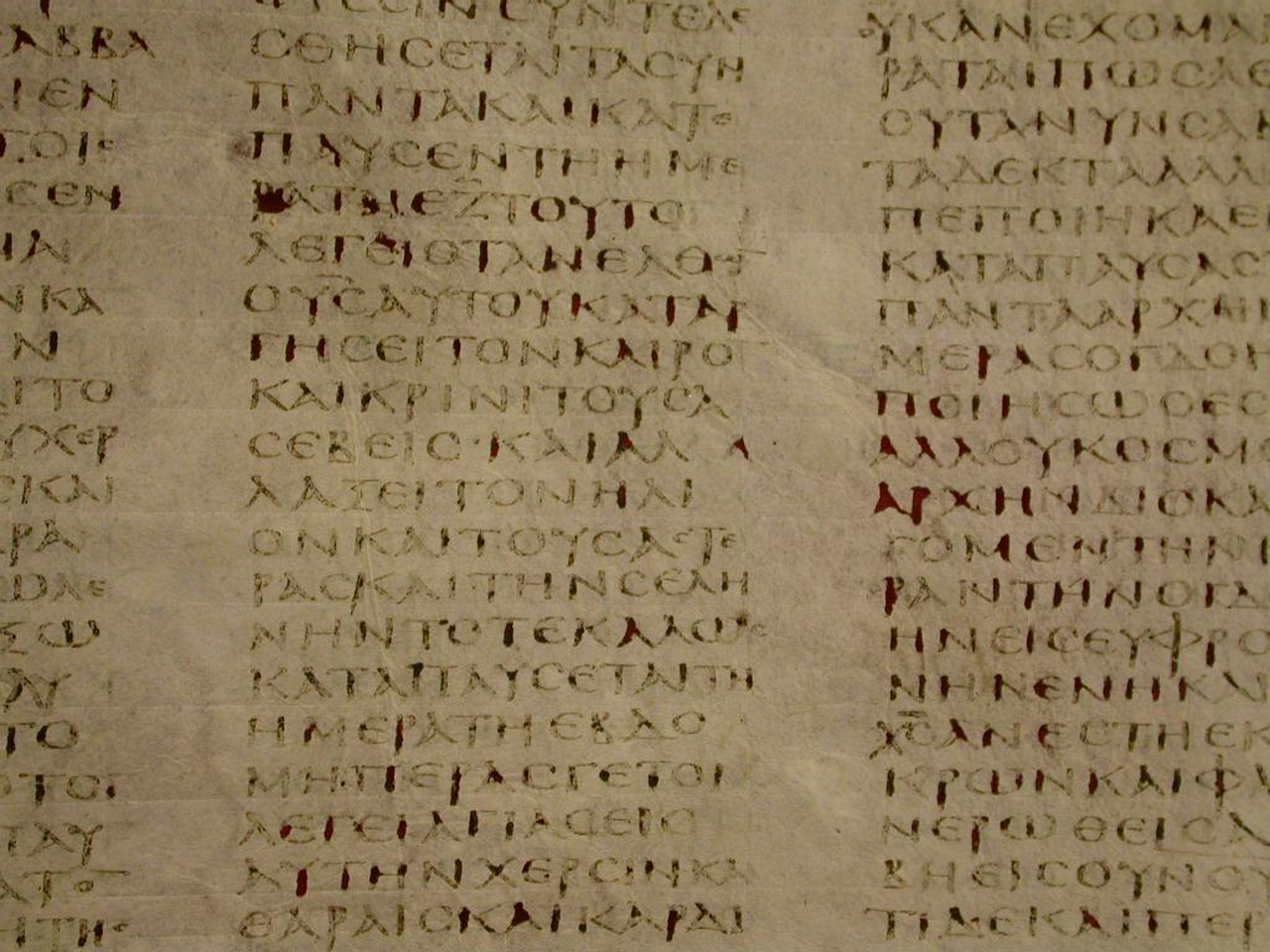Deut Quire 15, Folio 7
Also Codex Sinaiticus / New Perspectives, 2015, British Library, p229, 229
INK
In Codex Sinaiticus three colours of ink are used,— red, black, and brown, each of various shades. In the introduction to the 1911 facsimile, Lake noted that inks were of the usual sepia colour commonly found in ancient manuscripts. Brown ink was used for the main text and amendments to it, as well as the quire numbers and the mid-quire binding marks. Red was used for superscriptions and numbering of individual Psalms for the Eusebian apparatus, and for the primary numbering of the New Testament's quires. Tischendorf referred to the red inks as minium (red lead)5 probably meaning ‘red pigment’ rather than a specific chemical compound. K. Lake and Milne and Skeat' also mention the red ink used, and characterized it as vermilion. Analysis completed as part of the Project has confirmed that the red is indeed vermilion, or mercury sulphide (HgS).8 These red inks, as opposed to the browns, are generally stable, regardless of the side of the parchment on which they appear, and show very little damage, although some of them have thicker deposits on the parchment and are darker than others. Black ink was only occasionally used for retouching faded text and for some annotations. Like the parchment, all the inks generally appear to be of very high quality. Overall, the stability of all the inks on the parchment is remarkable considering the Codex’s age, with very little degradation detectable. As observed by Tischendorf and Lake,9 the colour, or more properly, the shade, of the ink is specific to each scribe. The colour differences between the inks that do occur may be attributable to the dilution, provenance, or proportion* the ingredients, or the interpretation of the ink recipe.
Degredation, Corrosion and Damage
If we look more closely at the degradation of the various inks, a picture begins to emerge of the relationship of the inks to the scribes. The differences in degradation expressed in Table 17.1 suggest that each of the scribes was responsible for making his own ink; or at least obtaining a supply of it.
The ink used by scribe A appears to be the most vulnerable and degraded, in contrast to that used by the other three scribes. 33%of the leaves written by Scribe A have major ink corrosion and 44% have major ink loss. This could be the result of a lack of sufficient binding agent in the original recipe, which would cause flaking and loss of the ink layer. Similarly, a high metal sulphate content in the ink could cause corrosion and a weakening of the parchment. The inks used by Scribe B1 and Scribe B2 show less major ink corrosion and ink loss than that used by Scribe A. The ink used by Scribe D is the most stable, showing very little major corrosion (only 6%) or major ink loss.
A certain degree of corrosion of the parchment was also noticed by Tischendorf and Lake, who commented that it appeared to be more pronounced on thinner leaves than on thicker leaves. As part of the project, the inks were examined visually, aided by microscopy. The examination confirmed Tischendorf and Lake's observation of a correlation between the degree of corrosion and the thickness of the parchment in many cases. This is true, for example of Q38 F7, with minor corrosion and an average thickness of approximately 0.22mm, in contrast to Q42 F7, with major corrosion and an average thickness of about 0.9mm. However there is no consistent direct correlation throughout, and one must assume that there are other elements beyond the thickness of the parchment that play a role in the dynamic of ink corrosion. Certainly the quality of the ink is a major factor. This can vary greatly not only from one scribe to another, but also with quires written by the same scribe. Every time the ink supply is renewed there may be slight changes in the final product that can be responsible potentially for greater or lesser damage. In Codex Sinaiticus this is evident particularly in some of the sections attributed to Scribe B1. Quires 43, 44, 45 are widely affected by minor ink corrosion, but Quire 46 is very little affected, though the leaves in all of these quires are around the same thickness. Thus the change in the amount of ink corrosion may result from the use of a different ink supply.


